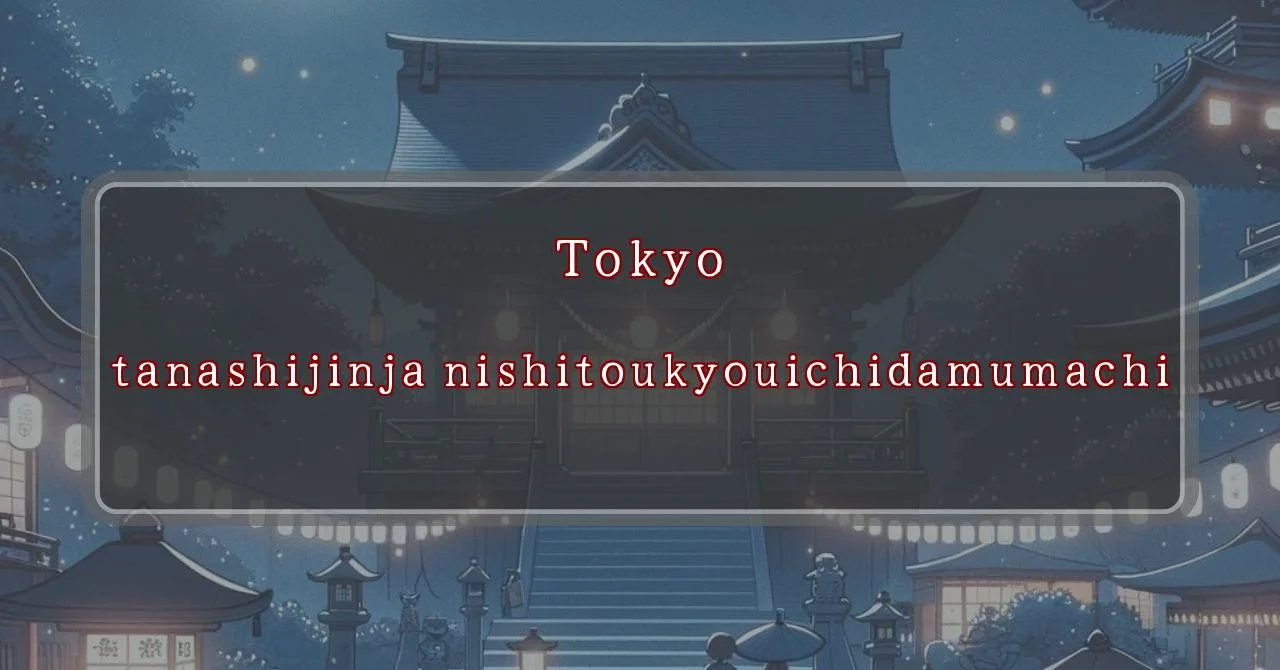Enchanting festival of lights in Tanashi
Basic Information
Tanashi Shrine is a Shinto shrine located in Tanashi-machi, Nishitokyo City, Tokyo, Japan.
- Address: 3-7-4 Tanashi-machi, Nishitokyo City, Tokyo 188-0011
- Phone Number: 042-461-4442
- Access: 5-minute walk from Tanashi Station on the Seibu Shinjuku Line
- Festival Days: Second Sunday of October and the preceding Saturday (2024: October 12th (Sat) and 13th (Sun))
Main Events and Attractions of the Festival
The Tanashi Shrine Festival is a vibrant and colorful event that attracts many visitors each year. The main events and attractions of the festival include:
Mikoshi Procession
The highlight of the festival is the mikoshi procession, where a portable shrine is carried through the streets of Tanashi by teams of people. The mikoshi is decorated with elaborate carvings and ornaments, and it is believed to bring good luck and prosperity to the community.
- Overview: A parade of portable shrines through the streets of Tanashi
- Significance: Symbolizes the purification of the community and the warding off of evil spirits
- Features: Elaborately decorated mikoshi, lively music, and energetic participants
Manto-matsuri (Lantern Festival)
During the festival, the shrine grounds are illuminated with thousands of lanterns, creating a magical and enchanting atmosphere. Visitors can also enjoy traditional Japanese music and dance performances, as well as a variety of food and drink stalls.
- Overview: A festival of lights held in the shrine grounds
- Significance: Represents the guidance of the gods and the purification of the community
- Features: Thousands of illuminated lanterns, traditional performances, and a lively atmosphere
Shishimai Dance
The shishimai dance is a traditional Japanese lion dance that is performed at the festival. The dance is said to bring good luck and ward off evil spirits, and it is a popular attraction for visitors of all ages.
- Overview: A traditional Japanese lion dance performed at the festival
- Significance: Symbolizes the warding off of evil spirits and the purification of the community
- Features: Energetic and colorful dance, intricate costumes, and lively music
Blessings and Deities
Tanashi Shrine is dedicated to a number of deities, including:
- Ookuninushi no Mikoto: The god of nation-building, agriculture, and good fortune
- Susanoo no Mikoto: The god of storms, the sea, and agriculture
- Sarutahiko no Mikoto: The god of roads and travelers
- Yachihiko no Mikoto: The god of water and rain
- Yachihime no Mikoto: The goddess of water and rain
- Yamato Takeru no Mikoto: The legendary prince and warrior
- Otsuchi no Mikoto: The god of earthquakes
- Ojin Tenno: The emperor who introduced Buddhism to Japan
These deities are believed to bestow various blessings upon worshippers, including good luck, prosperity, safe travel, and protection from natural disasters.
Origin and History
The origins of Tanashi Shrine are unclear, but it is believed to have been founded in the Kamakura period (1185-1333). The shrine was originally located in the Miyayama district of Tanashi, but it was moved to its current location in 1670.
Tanashi Shrine has a long and rich history, and it has been visited by many famous people over the years. In 1868, Emperor Meiji visited the shrine to pray for the success of the Meiji Restoration. In 1910, the shrine was designated as a village shrine, and it was later elevated to the status of a prefectural shrine in 1946.
Tips and Notes for Visitors
Here are some tips and notes for visitors to Tanashi Shrine:
- The shrine is open 24 hours a day, but the main hall is only open from 9:00 AM to 5:00 PM.
- Admission to the shrine is free.
- Visitors are expected to dress and behave respectfully.
- Photography is permitted, but please be respectful of other visitors.
- There is a small gift shop where visitors can purchase souvenirs.
Parking Information
There is a parking lot available for visitors to Tanashi Shrine. The parking lot is located on the north side of the shrine, and it can accommodate up to 50 cars.
- Parking is free.
- The parking lot is open 24 hours a day.
- Please park in the designated spaces only.
Popular Stalls and Food Carts in Recent Years
| Type of Stall | Description |
|---|---|
| Takoyaki | A staple at Japanese festivals. Characterized by a crispy outside and a creamy inside. |
| Jaga Butter | A simple yet popular snack of hot potatoes lavishly topped with melted butter. |
| Baby Castella | Small castella cakes, sweet and fluffy treats enjoyed by children and adults alike. |
| Grilled Ayu with Salt | Fresh ayu fish grilled whole with salt, a savory taste of Japanese summer. |
| Shaapin | A unique gourmet item influenced by foreign cuisine, with a chewy skin wrapping the filling. |
| Okonomiyaki | A Japanese grilled dish where you often choose your own ingredients for a personalized flavor. |
| Cotton Candy | A fluffy, sweet snack that’s extremely popular with children. |
| Chocolate Banana | A banana coated in chocolate, a fun and visually appealing dessert. |
| Kushiyaki | Various types of ingredients skewered and grilled, an easy-to-enjoy snack. |
| Yakisoba | Fried noodles mixed with a special sauce, a fast food favorite in Japan. |



